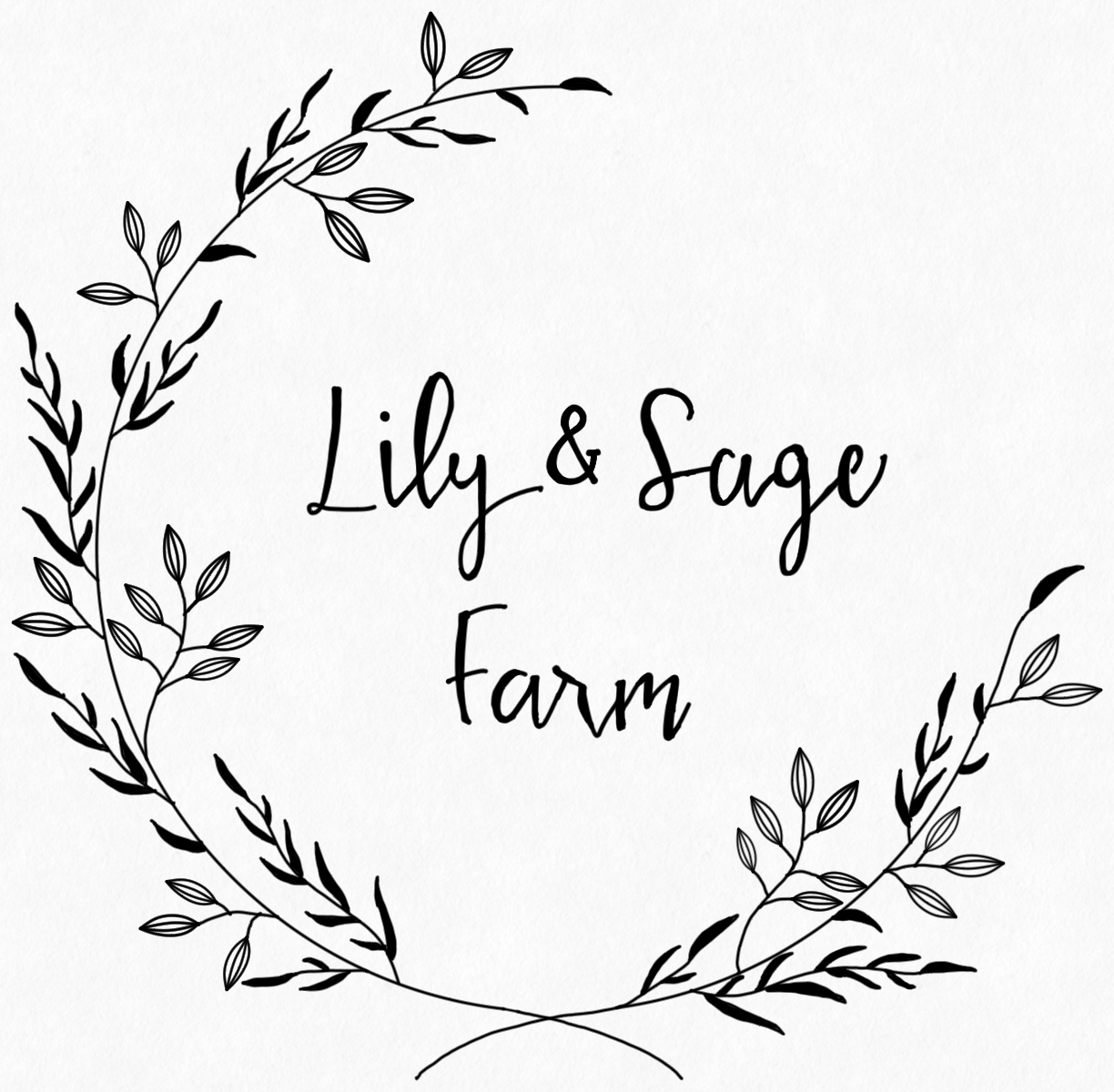Dahlia Information
Thank you for purchasing a mystery bag of dahlias from Lily & Sage Farm!
What you have in front of you is a random bunch of tubers taken from out many seed varieties we grew last year. All of these tubers could be a different type of Single, Double, Cactus, , Novelty open, Peony, collarette or double…. Crazy right? And they are all 100% brand new, never before existing flowers.(Until last season that is)
Dahlias grow two ways
- From the seed of the mama plant or the tuber of the mama plant.
Seeds from dahlias create a never before seen, never before existed and dahlia. Each seed collected from the dead flower head possesses nothing but potential. Every seed will be a unique new dahlia. (you can collect yours and the end of the season!
Tubers from dahlias are a clone copy of the mama plant.
So what YOU have in front of you is a second generation plant who was grown uniquely at Lily & Sage Farm. SO COOL!
Dahlia plants are a great summer crop. They do very well in heat and are a cut and come again flower. The more you cut them, the more the flower. The dahlia season is from mid July till the first frost in mid October.
Dahlias are NOT cold hardy and very sensitive to frost.
Planting your Dahlia
To begin, a dahlia tuber has 3 parts.
The body, the neck, and the eyes.
You need all three parts on a tuber to make the tuber grow,
Parts of your Dahlia Tuber
To begin, a dahlia tuber has 3 parts.
The body, the neck, and the eyes.
You need all three parts on a tuber to make
the tuber grow,
Eyes can be the most difficult to distinguish but are the most crucial part to the plant flowering. The only way you get a flower from a healthy tuber with a neck is to have an “eye” THIS is where the flower comes out. Without it, the tuber is a dud.
Your tubers have all been checked and have at least one eye on them. See if you can find them.
Planting your Dahlia
Dahlias need room. Both for their root systems and their flowers. If you have the space, Dahlias do well at 12 inch spacing. Depending what room you have available tubers can be laid flat with the eye facing up or in the hole you have dug eyes up.
Plant depth is 4-6 inches. If you have heavy clay soil 4 inches, if you have light airy soil 6 inches.
Feed your Dahlias
Like all things that grow you need to feed them if you want the best results. Dahlias don’t need a high nitrogen content; they push out greens well even if the soil is low average. What you want is a fertilizer that feeds the flower production. We use Dr.Earth Organic Bud & Blossom Booster. For those of you who like to nerd out on fertilizer info, it is a 3-9-4 fertilizer.
A quick note about fertilizing and amending your beds, pots, gardens…etc. ALWAYS use an organic mix. It is best for your garden long term and it also feeds the microbes in the soil. Soil regeneration is key to a healthy long lasting garden. It is also better for your health in the long run. .
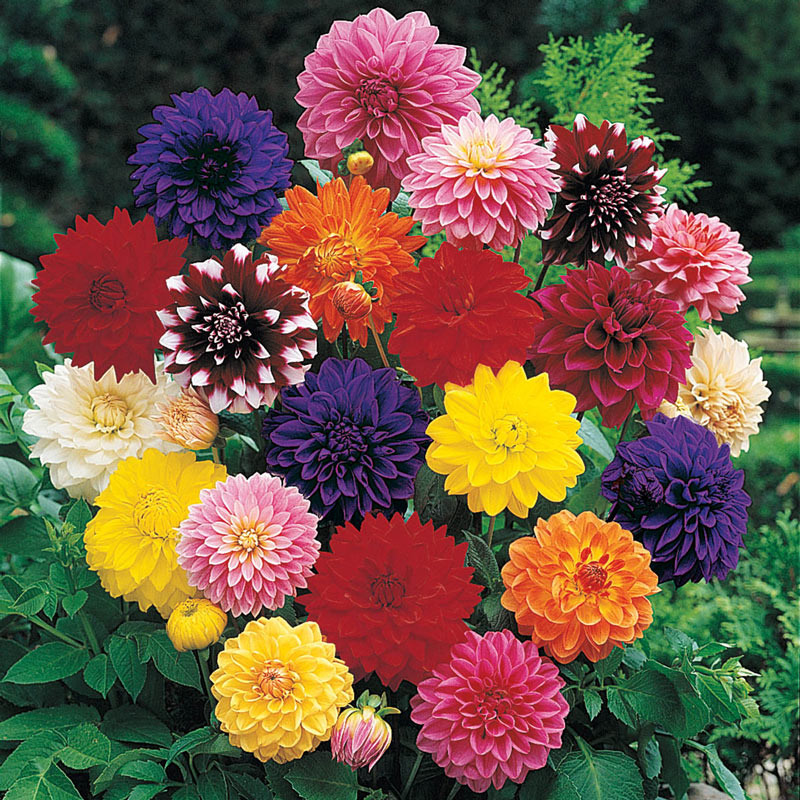
Calendula
Description
A mix of yellow and orange, Calendulas are easy to grow and the fastest flowers to bloom from seed—in just 2 months. Often called English marigolds, the plants are loved by beneficial insects. Petals can be used as fabric dye, are edible, and can be used medicinally in salves. Don’t be alarmed at the variety of seed sizes. They come in all shapes and sizes.
Details
Plant type: hardy annual
Height: 18 to 24 in
Site: full sun
Days to maturity: 60 days
Plant spacing: 9 to 12 in
Pinch: when 8 in tall
Seed Sowing & Growing Notes
Start seed indoors in trays 4 to 6 weeks before last frost; transplant out after all danger of frost has passed. Can be direct-sown and succession-planted every 2 to 3 weeks for continual harvest. Flowers will grow past first frost until first snow. We have harvested calendula in December before!! Seed harvesting is EASY! Let the flower heads go to seed and you will have your very own for the next season!
Harvesting/Vase Life
Harvest when flowers are three-quarters open. Foliage is sticky, so wear gloves when harvesting. Expect a vase life of 6 to 8 days.
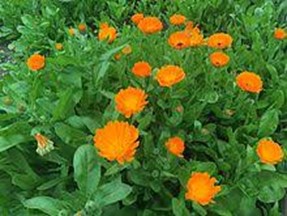
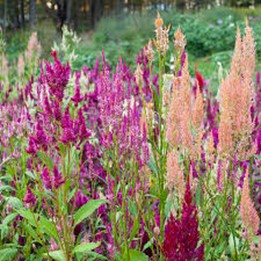
Celosia Plume Mix
Description
One of the fastest varieties to flower, these wispy plumes add lightness and texture to mixed bouquets. This mix includes yellow, orange, deep and light pinks. Grown for their unique, textural blooms, celosias are vigorous and free-flowering.
Details
Plant type: annual
Height: 36 to 48 in
Site: full sun
Days to maturity: 90 to 100 days
Plant spacing: 12 in
Pinch: when 6 to 8 in tall
Seed Sowing & Growing Notes
Start seed indoors in trays 4 to 6 weeks before last frost; transplant out after all danger of frost has passed.
Harvesting/Vase Life
Harvest once flower heads reach desired size, but before they go to seed. Strip 80 percent of the foliage off during harvest. Do not put into the cooler. Expect a vase life of 10 to 14 days. Flowers can also be dried for later use. To dry, hang freshly cut stems upside down in a warm, dark place for 2 to 3 weeks or until they are firm to the touch.
Cosmo (Crest Orange)
Description
These Beautifully bright orange colored flowers add so much life to the garden. From the moment they start flowering in the early summer they don’t stop until the first frost. These flowers are able to handle being cut into deeply and will recover well.
Details
Seed Prep: Requires Light
Sowing Method: Direct Sow,
or start indoors 4-6 weeks before last date.
Light Requirement: Full Sun
Planting Depth: 1/4 inch – with misted
moisture daily until you see green.
Plant Height: 40 to 84 inches
Plant Spacing: 9 to 12 inches
Water Needs: Low
*note about cosmo seeding. For BEST results when starting indoors. The cosmo seed you have has two ends . One end that comes to a soft point and an end that is more rough and flat (that was the end that the root comes from) for best result with your cosmo seed germination press cosmo seed vertically into the soil half way, rough/flat side down. Your chances of germination will increase. You can also lay them on their side and cover with a light dusting of fine soil or vermiculite. However, we have better luck with the press into the soil method.
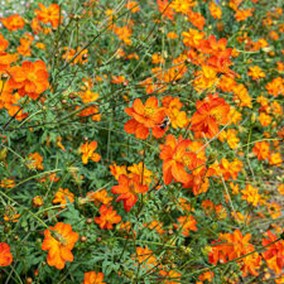
Cress: Pennycress
Description
A friend gifted me seeds from her Pennycress, and legend has it that it has been growing in the Skagit Valley since the year I was born. The bright, clean, apple-green stems are well-branched and loaded with round, textural seedpods. As seed heads mature, they turn the color of wheat. Succession-planting is recommended as pods come on all at once. Cress is a terrific textural filler for bouquets and can be dried for autumn wreaths.
Details
Plant type: hardy annual
Height: 36 to 40 in
Site: full sun
Days to maturity: 50 to 60 days
Plant spacing: 2 to 4
Pinch: Do not pinch
Seed Sowing & Growing Notes
Start seed indoors in trays 4 to 6 weeks before last frost; transplant out after all danger of frost has passed, or direct-seed as soon as the ground can be worked. Succession-plant every 2 weeks for continual harvest. Don’t pinch plants.
Harvesting/Vase Life
Harvest when seed pods are fully formed and the top blooms have faded. Expect a vase life of 7 to 10 days. Seed heads can be dried and used indefinitely. To dry, hang upside down in a warm, dark place until firm.
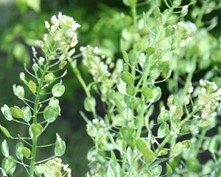
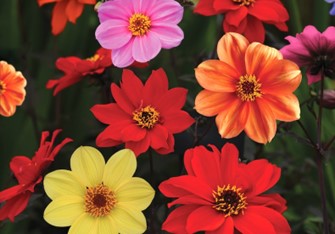
Dahlia: Mixed
Description
These Dahlias are seeds grown at Lily & Sage Farm that include a wide range of shapes, sizes, and colors—no two plants will be the same! Most of the flowers will have open centers, which will attract lots of pollinators to your garden. If you discover a variety you love, tubers can be saved and planted out the following year.
Details
Planting depth: ¼ in
Germination soil temp: 60°F–70°F
Days to germination: 5 to 12 days
Site: full sun
Plant spacing: 12 in
Pinch: when 12 in tall
Days to maturity: 100 to 120 days
Height: 48 to 72 in
Seed Sowing & Growing Notes
Sow seeds indoors in trays or pots 4 to 8 weeks before your last frost. Dahlias have a tendency to germinate sporadically, so be patient. Wait until the weather is consistently warm before transitioning young plants into the garden. Direct-seeding dahlias is not recommended. Personally I sow them 10 weeks before last frost in deep cell trays. My trays are 50 cell trays that are 6in deep. Works great!
Harvesting/Vase Life
Dahlias don’t unfurl much once they’ve been harvested so it’s important to not pick them too early. Harvest when blooms are three-quarters of the way open, but not overly ripe. Check the back of each flower head, looking for firm and lush petals versus papery or slightly dehydrated ones. Place into water with a hydrator or sear stem ends by placing into 160°F to 180°F (just off boiling) water and allow to cool for one hour. Expect a vase life of 5 days.
Feverfew: Classic
Description
The most adorable, tiny, daisy-like flowers. These long-lasting blooms are a market bouquet staple. Plants have a branching habit, and this hardworking filler will often produce a second flush of blooms if it is picked hard..
Details
Plant type: hardy annual/tender perennial
Height: 28 to 36 in
Site: full sun
Days to maturity: 100 to 110 days
Plant spacing: 9 in 6 inches
Pinch: not necessary
Seed Sowing & Growing Notes
Start seed indoors in trays 8 to 10 weeks before last frost; transplant out after all danger of frost has passed.
Harvesting/Vase Life
Harvest when one-quarter to one-half of the flowers on a spray are open. Feverfews are notorious for making their water dark and murky overnight, even with floral preservatives. To combat this, add a few drops of bleach to the water. Expect a vase life of 7 to 10 days.
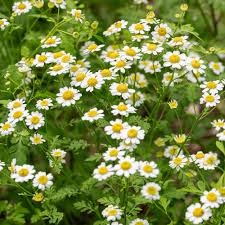
Pincushion: Buttercream
Description
This relatively unknown perennial pincushion variety is a must-grow! Plants have lacy foliage and produce an abundance of long, wiry stems topped with small, buttercream-colored blooms. They sparkle in the garden and lend a wildflower-like quality to arrangements. After flowers fade they leave behind miniature, pineapple-shaped seed pods that are excellent for handwork and crafting. This wonderful plant is covered in bees during the day and visited by moths at night.
Details
Plant type: hardy annual
Height: 36 to 48 in
Site: full sun
Days to maturity: 90 to 100 days
Plant spacing: 9 in
Pinch: not necessary
Seed Sowing & Growing Notes
Start seed indoors in trays 6 to 8 weeks before last frost; transplant out after all danger of frost has passed..
Harvesting/Vase Life
Harvest when the flowers are still in the bud stage or just beginning to open. Expect a vase life of 7 to 10 days.
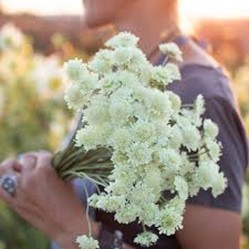
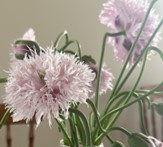
Poppy: Breadseed Poppy Lilac Peony
Description
These fluffy blooms remind us of a feather boa. A pouf of shaggy, featherlike petals in pale, silvery lavender with grape streaking sit atop a striking saucer of single petals. As flowers fade, they reveal glaucous green seedpods that add textural interest, both fresh and dried.
Details
Plant type: hardy annual
Height: 36 to 48 in
Site: full sun
Days to maturity: 80 to 90 days
Plant spacing: 9 in
Pinch: not necessary
Seed Sowing & Growing Notes
Breadseed poppies resent transplanting and do best when direct-sown. Sow seed directly into the garden after all danger of frost has passed. Slugs love them, so keep an eye out.
Harvesting/Vase Life
Harvest when flowers are half-open, and sear stem ends in boiling water for 7 to 10 seconds. The flowers of this variety of poppy aren’t particularly long lasting; expect a vase life of 2 to 3 days. Seedpods can be dried and used indefinitely.
Poppy: Shirley
Description
This long-flowering, easy-to-grow mix comes in hues spanning dusty plum, cocoa-dusted white, cream with raspberry veining, and muddy eggplant. Blooms have a delicate and ephemeral quality and are well loved by pollinators. Long stems, refined flowers, and adorable seedpods make this a perfect flower for wedding and wire work.
Details
Plant type: hardy annual
Height: 24 to 30 in
Site: full sun
Days to maturity: 55 to 65 days
Plant spacing: 9 in
Pinch: not necessary
Seed Sowing & Growing Notes
Shirley poppies resent transplanting. Direct-sow into the garden after all danger of frost has passed. Seed can be started indoors, just take care when transplanting out not to disturb the roots too much.
Harvesting/Vase Life
Individual flowers are short-lived, lasting 3 to 4 days if stem ends are seared for 7 to 10 seconds in boiling water. Seedpods can be dried and used indefinitely.
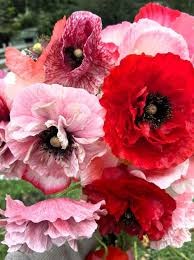
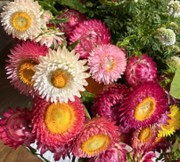
Straw Flower
Description
A versatile and textural addition to the cutting garden, strawflower can be used fresh and also dried for use in fall bouquets and wreaths. Flowers ride atop long, strong stems. Also known as everlasting flowers, the color and shape of these papery blooms will last indefinitely when dried.
Details
Plant type: annual
Height: 36 to 42 in
Site: full sun
Days to maturity: 80 to 90 days
Plant spacing: 9 in
Seed Sowing & Growing Notes
Start seed indoors in trays 6 weeks before last frost. Transplant out after all danger of frost has passed. Seed requires light to germinate, so do not cover. Bottom-water until seedlings emerge.
Harvesting/Vase Life
Harvest when the flowers are half open and before they are pollinated. Expect a vase life of 7 days or more. To dry, remove foliage and hang upside down in a warm, dark place until firm.
